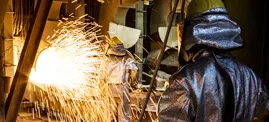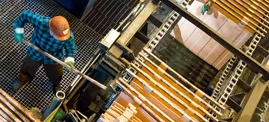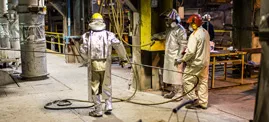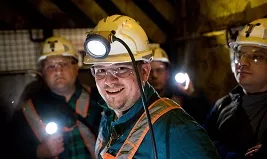On-going investment in modern solutions and environmentally friendly technologies as well as applying the strict standards of the European Union have made it possible for KGHM to effectively limit its environmental impact. Thanks to this, emissions to the air and water have been practically eliminated. Currently, the company focuses on maintaining environmentally effective and safe waste management.
To ensure compliance with rigorous international environmentals standards, KGHM has an on-going program in place to monitor the air, soil, plants, surface and underground water contamination levels, as well as the well-being of livestock, around all of its mining and metallurgical operations. On-going monitoring helps in making rational and diligent decisions related to sustainable waste management.
The best example of a safe and effective waste management program is that of the Żelazny Most tailings pond in Lower Silesia, Poland. This is the only site for storing floatation waste coming from all of the mines in the Polish Copper Belt. At the same time, it is the most important link in the copper concentrate production process. The production of copper and other metals would not be possible without this tailings pond.
Annually, from 20 to 26 million tonnes of flotation waste is deposited here. These are non-hazardous and inert wastes classified in accordance with the Regulation of the Minister of Climate of 2 January 2020 on the catalogue of waste (Official Journal 2020, item 10) under the code 01 03 81 - waste from flotation enrichment of non-ferrous metal ores other than those mentioned in 01 03 80. Nearly 75% is processed further, and only one fourth is disposed. According to studies carried out, once the expansion project currently underway is completed, the “Żelazny Most” facility will have the capacity to store waste until the copper ore in the Deep Głogów part of the Polish deposits is depleted. The mining of these deposits is one of the key projects of KGHM in Poland. Realisation of this undertaking will make it possible to maintain the current levels of copper extraction for the next 30-40 years. This is an ample proof of the site capacity and the potential of KGHM as a responsible tailings handler.
KGHM has minimised the impact of the Żelazny Most tailings pond on the environment by the installation of water curtains that prevent dust from rising and safeguarding the edges of the pond with asphalt emulsion solutions dispersed by means of helicopters. The company has also installed drainage systems and rim ditches in the dam zone, and carried out a number of drainage activities on the outskirts of the dam. Thanks to all of these activities, the surface water in the vicinity of Żelazny Most meets even the strictest cleanliness standards.





